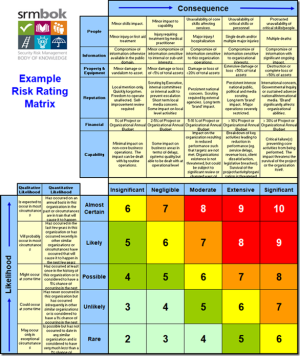
Rob and I were sitting in a laneway in Vienna discussing the two weeks of work approaching with Mondi Group and a collection of Global organisations and the discussion about this book was sparked. As we discussed program structure and outcomes we realised just how many models, semiotics and methods were to be used over the next fortnight.
The discussion also emerged out of a series of videos I wanted to do on zero (https://vimeo.com/user/57711103/folder/17469976) with Rob. That discussion also moved us to discuss tools, methods and models as semiotics. This partly came out of the fact that we had done a semiotic walk with the participants at Mauthausen Concertation Camp (about an hour north near Linz) and the way in which the e-motions in semiotics operates on the Unconscious. No-one on that walk in Mauthausen that day came out the same. Seeing the world with semiotic eyes is a unique way of seeing. There is nothing quite like a place like Mauthausen to shake the very foundations of what you think gives you meaning and purpose in life.
When we discussed the power of e-motions as learning, we started to talk about the need to bring together into one place, a chronicle of all the methods, semiotics and tools used in SPoR. So, we started to write and assemble all the methods of SPoR together and hence the publication of this book: SPoR and Semiotics, Methods to Tackle Risk. You can download the book (for free) here: https://www.humandymensions.com/product/spor-and-semiotics/
In creating this book, we realise the target audience is a few thousand people who have been educated in SPoR and Semiotics. However, for these people, this is a book to empower, encourage, upbuild and uplift. For all those people who have done Zooms, face-to-face workshops and conferences in SPoR, here is your guide to the semiotics of SPoR and how SPoR uses semiotic language to learn.
This comes from the back cover of the book:
__________________
The Social Psychology of Risk (SPoR) is premised on the criticality of all language for relationship, community and Socialitie. So, in SPoR when we think of language we don’t just think of text but all language that is para-linguistic, beyond linguistics. Just as we know that text and number evolved through the transfer of symbol to text, we also know that there are other languages that doesn’t use number and text. For example, Music has its own language that is composed of notes-notation but extends way beyond such an understanding. Music also holds the language of sound and all that e-motion that sound generates. When music is played and felt it extends way beyond the limitations of the mechanics of music. Indeed, in some ways aa focus on the mechanics of Music robs it of its full meaning.
When we consider language, text and linguistics we enter into the conscious world of cognition and brain-centric knowing. When we engage in symbolic language and para-linguistics knowing we enter into a whole new world of e-motion, embodiment, Poetics and felt-knowing. This is the world of love, trust, passion, faith, hope and heart-gut knowing. None of this is measurable. Nothing of this is mechanical or controllable.
Such a world should not be feared but rather embraced. SPoR embraces this world in its quest to understand and tackle risk.
This book brings together 25 years of work in SPoR all into one place. It presents the many models, methods, methodology and semiotics that are foundational to the Discipline of SPoR.
Just as music can only be understood musically so too, Semiotics can only be understood semiotically. Poetics (all that is not measurable) can only be understood poetically.
So, this is a book that attempts a translation of SPoR Semiotic knowing into the presentation of a different way of knowing, being and living in risk. This Semiotic knowing emerges from SPoR methodology into its many methods and models that focus on Socialitie and risk. This stands in contrast to orthodox approaches to risk that are consumed by text, checklists, audits, paperwork and tables.
In order to tackle the challenges of Semiotics and risk, one has to move beyond traditional rationalist methods and knowing and embrace different kinds of intelligence. Semiotic and Poetic language reveal a more relational-social way knowing. This knowing brings with it a new semiosis (meaning) that changes forever how one views, understands and tackles risk.
_________________
When I first encountered SPoR many years ago, I still remember the struggle I had to unlearn traditional safety and, let go of all the stuff I had been fed about auditing, safety policing and hazard management.
When I started to jettison the dehumanising methods of traditional safety and started to embrace the para-linguistics, semiotic and poetic ways of knowing in SPoR it was like I had been liberated to come home – to where I ought to be.
Then after several years of un-learning and re-learning in SPoR I realised just how fulfilling it was to put a focus in risk on persons, relationships, community and ethics. Since then, I have not looked back and now enjoy every time I work with organisations who ask me to help them humanise risk in their workplace.
If you have not learned about SPoR, I recommend it to you, it is life changing.
If you want to learn SPoR then there is nothing stopping you, there is so much for free and online. And, also plenty of experienced people to help, coach, mentor and care, if you make contact.
Matt Thorne
Risk Diversity



Peter Saaman says
Thanks Matt I’m gonna download it and for sure learn more on SPoR
Greetings Peter
Matt Thorne says
Look forward to your Questions Peter.
Rob Long says
Well done Matt, a wonderful addition to the suite of books we have in SPoR and risk. This one especially brings much together, a bit like the handbook except with the emphasis on methods. Such a great learning journey which I am sure your clients in the future will use.
Matt Thorne says
Cannot wait for the next chapter!